Holidays Posts on Crowch
In 2025, F1 Fan Festivals return with more cities, more excitement, and more ways for fans to connect with the world of Formula 1 — without ever stepping foot on a racetrack. These free public events transform city streets into open-air celebrations of speed, sound, and F1 culture.
What Is an F1 Fan Festival?
It’s a Formula 1 experience held in major global cities, featuring:
- Live show runs of F1 cars on city streets
- Meet-and-greets with drivers and team members
- Autograph and photo sessions
- Interactive exhibits and race simulators
- Fan challenges, games, and giveaways
- Live music and performances from top artists and DJs
Cities are turned into full-scale fan zones — with engine roars, tire smoke, and passionate supporters everywhere.

F1 Fan Festivals 2025 Calendar (preliminary):
- Tokyo, Japan — April (before Japanese GP)
- Miami, USA — May (during Miami GP week)
- London, UK — July (before British GP)
- São Paulo, Brazil — November (leading up to the Americas finale)
- Dubai, UAE — December (during season finale)

Why Attend a Fan Festival?
For thousands of fans, this is a first-time chance to:
- Hear the sound of an F1 car live
- Try racing simulators and challenge real lap times
- See historic championship-winning machines
- Feel the energy of a paddock — without a race ticket
Fan Festivals are free to attend, family-friendly, and filled with unforgettable moments that bring fans closer to the sport they love.
🌋 A Lake Like No Other

Tucked near the Tanzanian-Kenyan border, Lake Natron is one of the most hauntingly beautiful—and lethal—places on Earth. Seen from above, it resembles an alien canvas: swirls of crimson, rust-orange, and scarlet ripple across the land like spilled ink. But this stunning appearance conceals a deadly reality. Lake Natron is not just a salt lake—it’s a natural trap where water itself becomes a weapon.
From its chemical composition to its blistering climate, everything about Natron defies the logic of survival. Masai tribes, who live in the region, speak of the lake with a mix of reverence and fear. For them, it is both sacred and forbidden—a place where the earthly and spiritual worlds overlap.
🧪 When Water Becomes a Caustic Tomb

The danger of Natron lies in its extreme chemistry. The water’s alkalinity can soar to a pH of 12.5—more corrosive than household ammonia. Temperatures regularly exceed 50°C (122°F), turning the lake into a simmering basin. It contains high levels of sodium carbonate, or natron—a mineral used in ancient Egypt for embalming mummies. At Lake Natron, nature performs the mummification process unaided.
From the air, the lake’s reflective surface can resemble ice, tricking migratory birds into landing. But what looks solid is in fact caustic sludge. Once touched, the hot alkaline water quickly dehydrates and calcifies organic matter. Birds and bats become eerily preserved in their final moments, their bodies encased in a crust of salt and soda—frozen in time like statues.
🌫️ The Lake Where Even Rain Disappears

Surrounded by volcanic mountains and baked by the East African sun, Lake Natron is located in one of the driest regions of the continent. Even when rainclouds gather, the moisture often evaporates midair before touching ground. Locals refer to this eerie phenomenon as “phantom rain.” It’s a poetic name for a brutal paradox—where clouds weep, but the land remains untouched.
This climate contributes to Natron’s hostile nature. The high evaporation rate concentrates salts even further, making the lake more toxic with each passing season. No outlet means no escape for these minerals—they remain, building layer upon layer of chemical intensity.
🐟 Who Lives in the Alkaline Abyss?

Despite the seeming lifelessness, Lake Natron is not entirely barren. Evolution has carved out niches for survival in even the most hostile ecosystems. Meet the alkaline tilapia—a resilient fish species that thrives in pockets of less saline water near the lake’s edges. These hardy swimmers can reproduce and breathe in conditions that would kill most life forms.
Beneath the surface, colonies of cyanobacteria flourish. These microorganisms not only survive but thrive in the alkaline waters, and in doing so, they dye the lake in dazzling hues—shades of red, orange, and pink. Their pigments protect them from the intense UV rays, giving the lake its iconic alien glow.
🦩 Flamingos in a Sea of Danger

The most astonishing life at Lake Natron isn’t microscopic. It's feathered and pink. This inhospitable lake is home to the largest breeding colony of lesser flamingos in the world. Every year, up to two million flamingos gather on its salty shores, transforming the landscape into a sea of fluttering pink wings.
Why choose such a dangerous location? Precisely because of its danger. Flamingos nest on hardened salt ridges, isolated from predators who can’t withstand the lake’s harsh conditions. The birds avoid direct contact with the lake’s most caustic zones, using shallow pools and mud flats to build their nests. Here, surrounded by boiling waters and toxic mud, they find relative safety for raising their young.
🧭 More Than Science: A Portal of Myths and Power

To scientists, Lake Natron is a geochemical anomaly—a rare natural laboratory where few dare to study close-up. To the Masai, it’s a spiritual nexus. Stories passed down through generations speak of ancestors and spirits dwelling by the lake’s shores. Some believe it is a gateway to the afterlife, a place where the boundaries between the physical and the divine are blurred.
Standing near the lake, it’s easy to understand why myths flourish here. The eerie silence, shimmering air, and petrified remains scattered along the shoreline make it feel like a scene from ancient legend or science fiction. This is where nature transforms into something symbolic—violent yet sacred, terrifying yet beautiful.
🧳 Final Reflection: When Nature Says “Keep Out”
Lake Natron is not a trick of Photoshop or a surrealist art piece. It’s very real—and very dangerous. Here, water doesn’t cleanse; it scalds and fossilizes. Here, birds don’t merely die; they become monuments. And yet, amid this elemental fury, life persists. Adapted creatures find sanctuary in the unlikeliest of places, protected by the very forces that destroy others.
If you ever travel to northern Tanzania, approach Natron with respect—and from a safe distance. This lake is a living reminder that nature’s power is not always welcoming. Not because it’s evil, but because it is untamed. In that wildness lies its awe. Its authority. Its warning.
🌊 A Monastery Suspended Between Sky and Sea
Santa Maria dell’Isola is more than a historic monastery—it’s an emblem of Calabria’s soul. Rising majestically above the Tyrrhenian Sea on a rocky promontory in Tropea, this architectural gem appears to hover between sea and sky. With roots tracing back over a millennium, its structure is a fusion of Romanesque strength and Gothic grace. But more than that, it’s a place where time slows, and the Mediterranean whispers the stories of centuries past.
The first glimpse of the monastery, set against shimmering blue waters, leaves a lasting impression. Its cliffside location, often mistaken for an actual island, is linked to both local legend and ancient navigation routes. Accessible via a narrow land bridge, the promontory provides not only geological stability but also a stunning panoramic perspective—ideal for capturing unforgettable travel photos.
🏗️ Layers of Time in Stone and Design

The architecture of Santa Maria dell’Isola reveals centuries of adaptation and survival. Initially built with Romanesque solidity—rounded arches, thick walls, and simple geometries—the structure later acquired delicate Gothic elements. Pointed arches, intricate carvings, and a refined facade were added during successive renovations following earthquakes.
Built with local stone, the monastery’s walls are engineered to endure the salty air and seismic tremors. Interior reinforcements and clever construction techniques allowed this monument to withstand nature’s tests while retaining its elegance. It’s a textbook example of Southern Italian engineering adapted to a volatile yet beautiful landscape.
🖼️ Sacred Icons and Mysterious Legends

At the spiritual heart of the complex lies a rare 12th-century Byzantine icon of the Virgin Mary, painted in tempera and decorated with gold leaf. This artifact is not only a devotional object but a bridge to the region’s Eastern Christian heritage. Legends say the Virgin Mary appeared in a vision here in 1638, warning of a coming earthquake. Remarkably, historical records confirm such an event—yet the townspeople were spared, possibly due to the timely evacuation prompted by the vision.
Another tale tells of a wooden statue of the Madonna arriving by sea during the iconoclastic period, when sacred images were being destroyed in the Byzantine Empire. Smuggled across the Mediterranean, it found a new sanctuary on this promontory, adding to the mystique and sanctity of the site.
🥾 Getting There: The Path and the Experience

Visitors can reach the monastery via a carefully constructed 18th-century staircase carved into the rock. With around 100 steps and strategically placed rest platforms, the climb is manageable and rewarding. The best times to visit are early morning (8–10 AM) or late afternoon (5–7 PM), when soft lighting enhances the natural beauty and makes photography especially magical.
From the top, you’ll be rewarded with a 360-degree view: Tropea’s historic old town on one side and endless sea horizon on the other. This elevated vantage point provides insight into why this location was both spiritually and strategically chosen by its ancient builders.
🎉 Living Traditions and Local Celebrations

Though historic, Santa Maria dell’Isola is still alive with religious tradition. The highlight of the year is August 15—Feast of the Assumption—when a grand procession carries the Byzantine portrait of the Virgin through the cobbled streets of Tropea. This ritual, unchanged since the 17th century, draws pilgrims and locals alike in a vibrant display of faith and continuity.
Beyond spirituality, Tropea also delights with its culinary gifts. The famed Tropea red onion (Cipolla Rossa di Tropea IGP), sweet and mild thanks to iodine-rich coastal soil, is a staple in local dishes. It’s a reminder that culture here flows from both the land and the sea.
🚗 Beyond the Cliff: How to Explore the Region

Reaching the site is easy with Calabria’s developed road system. Renting a car gives travelers flexibility to discover nearby gems, such as the town of Pizzo—home to the cave church of Piedigrotta and the historic Murat Castle. For a different perspective, boat tours along the Costa degli Dei (Coast of the Gods) offer dramatic views of the monastery from the water, echoing the way ancient sailors once encountered it.
These tours use shallow-draft boats, allowing close approaches to the rugged cliffs. It’s a uniquely immersive way to see the monastery as part of a landscape shaped by wind, water, and myth.
🌋 Bonus Journey: Volcanic Echoes Across the Sea

For the adventurous, a day trip to the Aeolian Islands is within reach. This volcanic archipelago—visible from Tropea on clear days—has been inhabited since Neolithic times. The islands offer hiking, archaeological sites, and the chance to see an active volcano, Stromboli, up close. It’s a fitting companion destination to Santa Maria dell’Isola, connecting geological wonders with spiritual heritage.
The bus remains one of the most affordable ways to travel across Europe. While it may be slower than trains or planes, bus travel continues to be popular among students, budget travelers, and anyone who values simplicity, flexibility, and savings.
Today, Europe’s bus network covers thousands of destinations, connecting not only major capitals but also small towns and remote regions. Intercity and international routes are well developed thanks to companies like FlixBus, BlaBlaBus, Eurolines, and many regional providers. Modern buses offer comfort that was rare a decade ago: soft reclining seats, air conditioning, onboard Wi-Fi, USB outlets, and restrooms. Many carriers also allow luggage at no extra cost.
The main advantage of traveling by bus is the price. Tickets on popular routes can cost just a few euros, especially when booked in advance. For example, a Paris–Amsterdam train might cost €60–100, while the same trip by bus could be as low as €15–25. Buses are particularly cost-effective for international travel where flights are expensive or rail options are limited. Additionally, buses often arrive directly in city centers, unlike airports that are typically located on the outskirts.
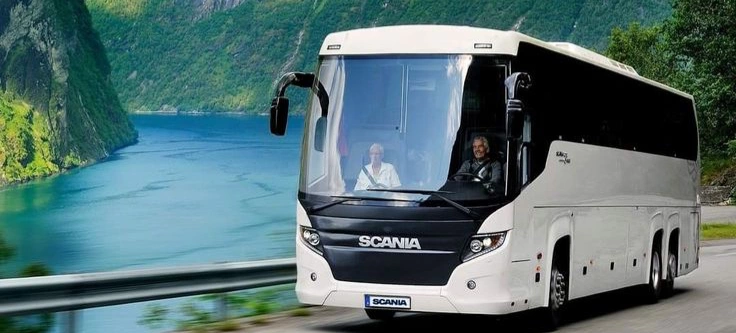
Flexibility is another major benefit. Most routes run daily, and there are many overnight options, allowing travelers to save on accommodation. It’s usually easier and cheaper to change a bus ticket, cancel a trip, or book at the last minute compared to train or plane travel. In some countries, such as Germany or Poland, combination tickets (bus + local train) are available, which simplifies transfers.
However, bus travel does have its limitations. Travel times are longer, especially for cross-border trips. A journey from Berlin to Paris by bus may take 8 to 10 hours. Border crossings can cause delays, particularly when entering or exiting non-Schengen countries. On holidays and peak days, buses may be crowded, and traffic can increase travel times significantly.
Service quality also varies by operator. Major companies like FlixBus and BlaBlaBus maintain consistent standards, upgrade their fleets regularly, and provide mobile apps to track departures. Smaller providers may use older buses and offer limited customer support. It’s a good idea to read reviews before booking and to carefully review schedules, especially for overnight trips and arrival times.
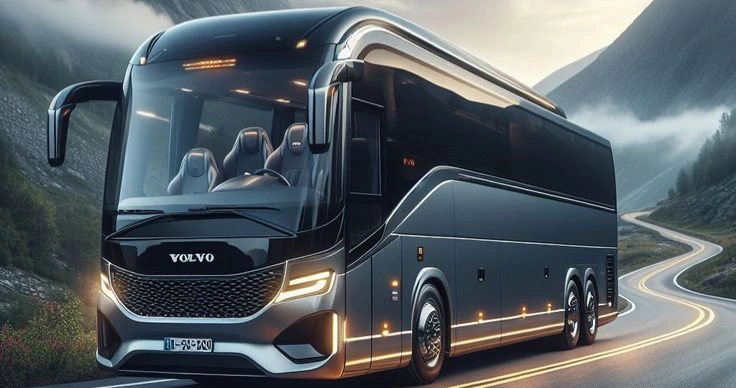
Overall, bus travel is an excellent option for those who prioritize budget, aren’t in a rush, and want flexibility. It’s a convenient way to discover Europe, especially if your route includes lesser-known but equally interesting locations. Traveling by bus lets you watch landscapes pass by your window, travel overnight, reduce costs, and remain independent from tour packages or fixed itineraries.
If you’re planning a trip on a budget and want the freedom to explore at your own pace, buses offer a practical and proven solution. Europe has tens of thousands of routes available online, with transparent prices and clear booking systems. All you need to do is pick a direction and hit the road.
The World’s Cheapest Airlines: Maximum Travel for Minimum Cost
Low-cost carriers (LCCs) have transformed global air travel by offering ultra-affordable flights and simplified service models. Over the past two decades, they’ve made flying accessible to millions, enabling people to explore the world on a budget.
This article explores the leading budget airlines around the globe, highlighting their features, networks, and key advantages.
Europe’s largest low-cost airline, based in Dublin with dozens of operational bases across the continent. Famous for ultra-low fares starting at just €5–10, Ryanair offers a no-frills experience: you pay for the seat, and everything else—baggage, meals, seat selection—is optional.The airline operates over 2,000 flights per day across more than 40 countries. Known for punctuality and operational efficiency, Ryanair enforces strict policies with additional fees for changes or extras.
AirAsia (Malaysia / Asia)The leading budget airline in Asia. AirAsia connects key cities across Southeast Asia, China, India, the Middle East, and Australia. Long-haul routes are operated via AirAsia X.The airline consistently offers some of the lowest fares in the world, especially for early bookings. AirAsia also provides a flexible fare system and a strong loyalty program.
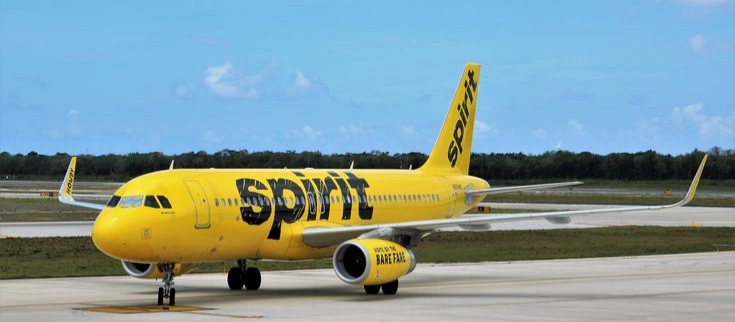
Wizz Air (Hungary / Central & Eastern Europe)A fast-growing European low-cost carrier focused on Central and Eastern Europe. Wizz Air often flies to secondary airports, allowing fares as low as €10.It has expanded into the Middle East, Caucasus, and Central Asia in recent years. The airline boasts a modern fleet and a user-friendly booking system.
Spirit Airlines and Frontier Airlines (USA)Two of the leading low-cost airlines in the United States. Specializing in domestic routes between major cities, both offer extremely low base fares.However, virtually all extras—including carry-on bags and water—come with additional fees. Their business model prioritizes affordability over amenities, making them ideal for short-haul, budget-focused travel.
Jetstar (Australia / Asia-Pacific)A subsidiary of Qantas, Jetstar offers budget flights across Australia, New Zealand, Japan, and Southeast Asia. Known for competitive pricing and moderate onboard comfort, it provides a middle-ground between low-cost efficiency and traditional service.Jetstar is particularly strong on international routes out of Australia.
Scoot (Singapore)Scoot is the low-cost arm of Singapore Airlines and flies to more than 60 destinations across Asia, the Middle East, and Australia. The airline is known for extremely affordable long-haul fares originating from Southeast Asia.Passengers can customize their experience with optional add-ons like seat selection, meals, and baggage—offering flexibility with affordability.
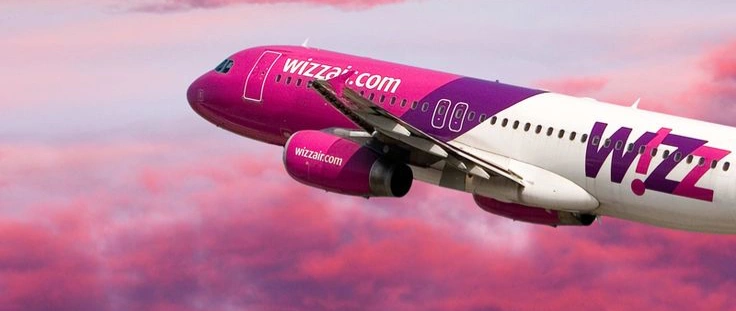
- Low base fares (especially with early booking)
- Basic services with paid extras
- Strict luggage and check-in policies
- Often use secondary airports
- Best suited for short- and medium-haul routes
ConclusionBudget airlines have opened up the world for cost-conscious travelers. Their no-frills model emphasizes flexibility, transparency, and affordability. For those willing to sacrifice some comfort in exchange for unbeatable prices, low-cost carriers offer the most economical way to fly. Just remember to read the fine print and book early to get the best deals.
Travel always comes with a bit of the unknown. In the past, we worried about lost luggage or mixing up terminals. But today, the most common stress starts with your phone: no internet, WhatsApp calls won’t go through, taxi apps don’t load, and your map is frozen.
We’ve grown used to “digital comfort” — and we assume it’ll be there everywhere.But in reality, mobile internet abroad isn’t always stable or straightforward. What feels natural at home might not work at all overseas.
So what is a "connectivity test" before a trip?It’s not a technical process — it’s a smart habit. A quick check to see how your phone, apps, and eSIM will behave in the country you're visiting. Spend 10 minutes now, save hours (and nerves) later.

📌 What you should test in advance:
1. Do VoIP calls work (WhatsApp, Telegram, FaceTime)?In countries like the UAE, Qatar, and China, these calls are blocked. The solution? Install a VPN before your trip. Not after arrival — by then, it might be too late.
2. Will your eSIM connect to the right network?eSIM providers work with different local carriers. Check their site or support to see which operator you'll be using — and whether it has strong coverage in the area you're staying.
3. Does your eSIM allow hotspot sharing (tethering)?Many eSIM plans block it. If you plan to work from your laptop or share internet with other devices, this is essential to confirm.
4. Does Google Maps work in that country?In China, for example, it doesn't — unless you use a VPN. Better to download offline maps in advance and have apps like Maps.me ready as a backup.
5. What payment methods are accepted?In countries like Vietnam or Indonesia, Apple Pay and Google Pay might not be supported. Find out in advance whether your cards work and if you’ll need local cash.
6. Which taxi apps actually work there?Uber isn’t available everywhere. In Turkey, it’s BiTaksi. In Indonesia — Gojek or Grab. Check whether these apps require a local phone number to register.
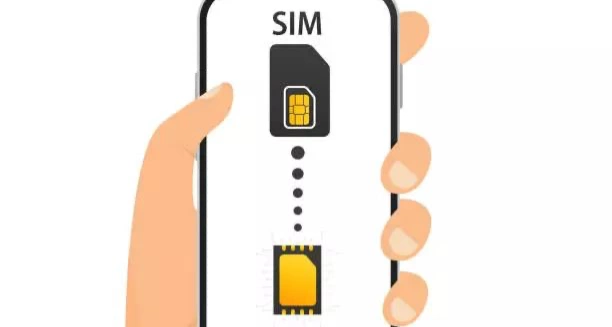
💡 Bottom line: checking before you fly isn’t paranoia — it’s smart.
We all want travel to feel smooth and easy. And when everything works — it’s truly great. But to make sure it does, a little preparation goes a long way.
A “connectivity test” is just a quick mental checklist you can do in 15 minutes at home — instead of standing at the airport wondering why WhatsApp won’t connect or your taxi app can’t find your location. It’s a small step toward a much calmer journey.
Cuba is not just a destination — it’s another reality. A place where the past hasn’t disappeared but lives on, right here and now. It lingers in the sound of salsa echoing through the streets, in the scent of tobacco and salt, in vintage cars and faded colors, and in the faces of people who know how to enjoy life — even when there aren’t many reasons to.
My journey began in Havana, a city that feels like it’s been pulled from an old film reel. The buildings are weathered but proud, the colors bold, the cars straight from the 1950s, and the music — always music — flows from open windows and street corners. No one’s in a rush. Time moves differently here — not by the clock, but by the feeling of the moment.
I walked along the Malecón, where the sea meets the city. I sat on the seawall, watching waves crash while someone nearby strummed a guitar, another smoked a cigar, and a child laughed into the wind. That’s Cuba — loud and quiet, joyful and tired, rough and beautiful — all at once.

From Havana, I traveled to Viñales, a valley of red earth and green tobacco fields. The air smells of sun and soil. Horses are still a common way to get around. This is where real Cuban cigars are born — made by hand, story by story, generation by generation. At sunset, the sky turns pink behind the hills, and silence says more than words ever could.
Then came Trinidad — a cobblestoned dream. Bright houses, colonial charm, live music in every square. Dance breaks out at random and becomes a celebration you’re pulled into, whether you’re ready or not. No one cares if you can dance — only that you try.
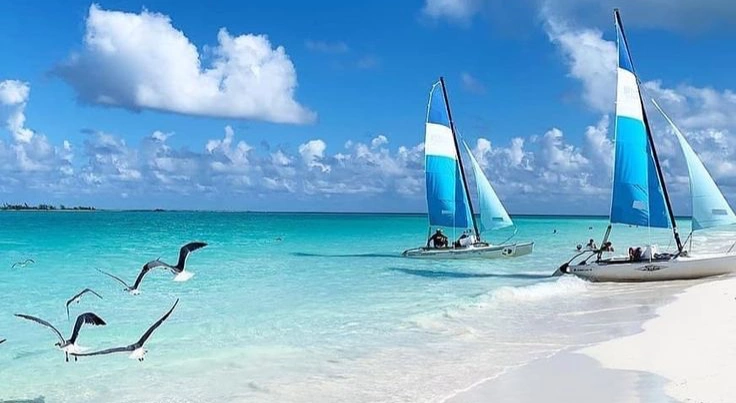
And of course, the sea. Crystal waters, soft sand, palm trees, catamarans, and the kind of stillness that lets you forget what day it is. You’re not just at a beach — you’re inside a postcard. And strangely, it doesn’t feel fake. It feels like you’ve been granted a pause.
Cuba isn’t about comfort. It’s about contrast. It doesn’t try to be perfect — and it doesn’t need to. It’s raw, real, and honest. The Wi-Fi barely works, but conversations come alive. Streets may be crumbling, but music fills the cracks. You begin to remember how little you need to feel joy.
Cuba doesn’t try to impress you. It simply is. Bold, warm, imperfect — and that’s what makes it unforgettable.